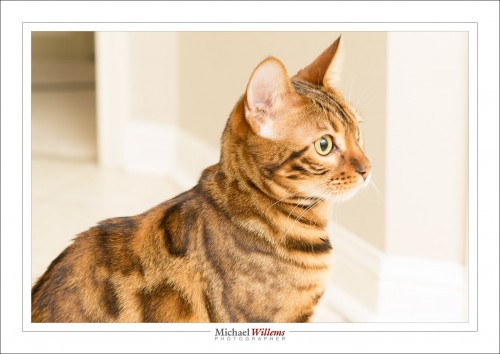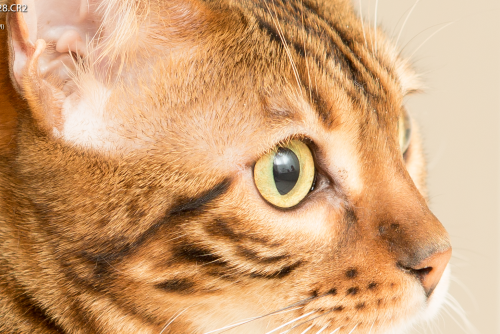Shooting animals, there is one thing you have to take into account. Namely, that they have snouts, where the nose and eyes are far apart in distance when they look at you. Unlike in the case of humans, where our eyes and nose are quite close.
This is important why? Because of focus. Where f/5.6 may be enough for a face to be in focus, in an animal, invariably it isn’t, and you will get either a sharp nose, or sharp eyes. Anyone who has taken pictures of their pet will know this. Especially when using fast lenses indoors.
The solution?
There’s the usual suspects: to get more depth of field, you need any combination of:
- a wider angle (shorter) lens, i.e. “zooming out”, or
- you get farther from your subject, or
- you use a smaller aperture (higher “f-number”).
Or, perhaps the simplest solution: you do not shoot them straight on.
See. we have narrow depth of field, but it is not annoying us here. Both nose and closest eye are in sharp focus.
Bonus question: what about the light?
I am bouncing my flash behind me. You can see that by the catch light: a circle on the ceiling behind me, lit up by my flash.
___
Want to learn video with your DSLR? Come to my 3-hour seminar in Oakville on Sunday, 30 March. This seminar is limited to no more than 6 people. In this three hour lesson, Michael teaches you:
- Perfect camera settings for each situation
- The secret to achieving focus
- Additional equipment to consider
- Avoiding the 5 common mistakes
- Audio: The forgotten essential.
- Three ways to Make It Better.
- Composition of your images
- Types of shot and how to use them
- Storytelling in a video: using B-roll, script, and storyboarPost-production tips
Your DSLR is a great tool for movie-quality videos, but only if you know the secrets to its effective use. Space is limited: sign up now via http://cameratraining.ca/Booking.html.


